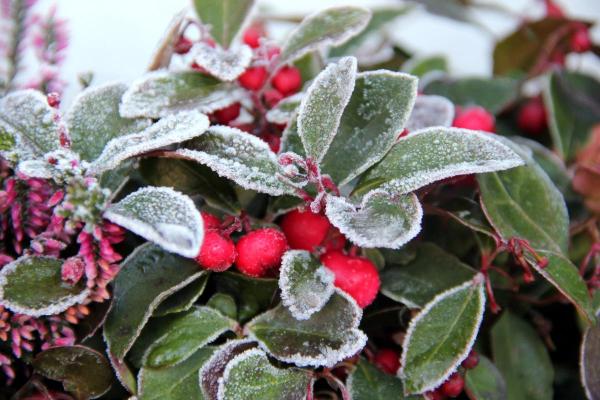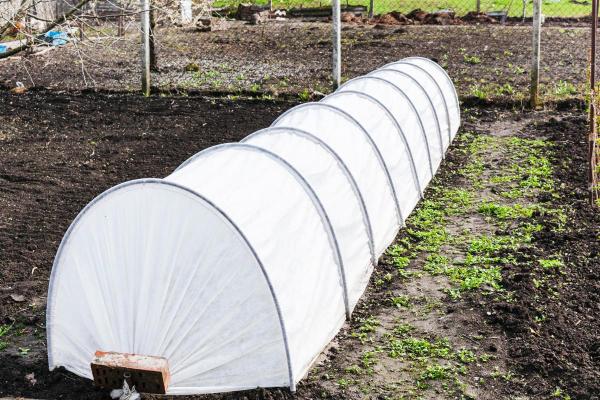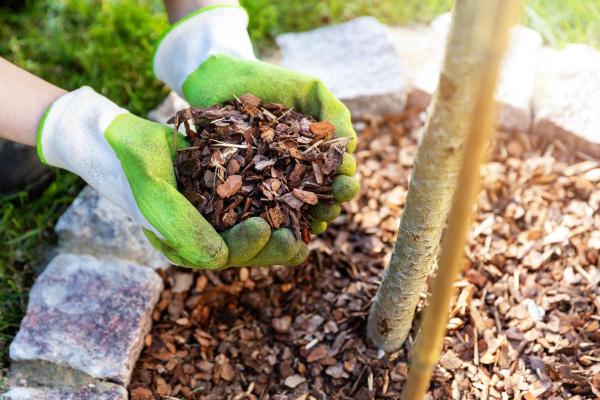
To protect plants from winter cold and frost, the first thing should do is ensure you plant the right species for your climate. You cannot plant tropical plants outdoors if you live somewhere with freezing temperatures. However, you can do this indoors if your are able to provide a climate controlled environment. For winter plants outdoors, you should cover the roots and install protective covers when necessary. We want to protect our plants from winter freeze, otherwise they can damage the plant. Not only might it undermine their growth, but they can also die.
In this guide to caring for outdoor plants in winter from thedailyECO, we explain how to protect plants from frost and freeze. We use both home gardening and professional methods to help you in the task of protecting your potted and garden plants in winter.
Choose the right plants
The first and easiest step to protect our plants from the cold is to make a good choice. We cannot expect warm climate plants to thrive outdoors in a cold climate or in a harsh winter. If the climate in our area is frosty, we would do well to look for plants that are suitable for this type of cold climate.
Check out our guide to winter outdoor plants for pots to see some of your best options and use the link below to purchase some:
[ltmbox id="6hhDH2Cm" label="Buy potted Japanese maple tree"]

Cover the roots
A simple way to protect a plant from the cold is to cover the top of the soil where it is planted. Whether we use a cover, plastic or shade mesh, this action helps create a milder microclimate for the plant, preventing extreme cold from affecting its roots and the lower stem.
Thermal blankets for plants are readily available in the market. These blankets allow you to adjust the temperature and duration of coverage, making plant care much easier. During cold nights or seasons, the thermal blanket traps the earth's heat and prevents it from escaping into the atmosphere, helping the plant maintain a near-ideal temperature.
Plant covers for frost
These days, it is very easy to purchase semi-professional greenhouses online. Essentially, these are small structures made of ventilated plastic or polyester fabric that are supported by a metal frame. They allow you to group together plants that require extra care in winter.
For plants in movable pots, placing them in this improvised greenhouse provides excellent protection against the cold. For garden or orchard plants that are not potted, there are specialized bags or fabrics made from the same materials. These covers are easy to install and protect the plants from cold or frozen water caused by snow or frost, preventing damage to their leaves and roots.
Learn about what is black frost and how it affects plants with our related guide.

Give them less water and less fertilizer
In winter and extreme cold, plants reduce their vital activity as a survival strategy. While they do not hibernate like animals, plants adapt by requiring much less nourishment. This means they can survive without expending energy to process excess water or nutrients.
It is important to water plants at risk from extreme cold sparingly and less frequently. This allows them to conserve their resources and use water more efficiently. Similarly, reduce or eliminate fertilization during the cold months.
Use plant heaters
In areas where frost is frequent, expert gardeners often use heaters, both indoors and outdoors. These heaters operate at very low temperatures, just enough to dissipate freezing cold.
Using heaters requires some experience, as beginners might find it challenging to determine the appropriate temperature, duration of use and safe distances. Improper use could result in burning the plant leaves instead of protecting them. This method is better suited for plants that have already been acclimatized to such practices.
Bring the plants inside or use a large greenhouse
Potted plants can easily be moved indoors for a vacation during the frost season. Place them near windows or skylights so they can continue to receive indirect sunlight. This is a straightforward way to protect them from the cold. Return them to their outdoor location once the frost ends and temperatures raise again.
If you have sufficient space, you can opt for a larger greenhouse shed, which accommodates more plants and provides better insulation than semi-professional greenhouses. This is ideal for housing all your potted plants that require winter protection.

Apply mulch
Winter is an excellent time to apply mulch to the surface of the soil, whether in a garden or in pots. Mulch can consist of dry leaves, sawdust, fine organic waste, cotton by-products, wood shavings, tree bark remnants or fully composted organic material.
By covering the soil with mulch, you create an insulating layer that retains warmth and acts as a natural shield against the effects of extreme cold. Discover the differences between compost and fertilizer in our related article.

Put up a barrier of trees
In large areas, planting a ‘curtain’ of trees that are resistant to cold and frost can provide significant protection for other plants. These trees should be robust and endemic to the region to maximize their effectiveness.
To function as a protective barrier, these trees should be planted in straight lines along the edges of the property This will most effectively isolate the area from harsh winds and freeze.
Can a frozen plant be recovered?
The ability to recover a plant after frost or freeze depends on its type and the extent of the damage. Here are some steps to follow in most cases:
- Once the frost has passed, add new soil enriched with growth hormones and worm castings.
- Hydrate the plant thoroughly but avoid exposing it to direct sunlight for the first few days. Use a spray bottle to provide gentle hydration.
- When spring arrives, prune the plant and observe its response.
If the frost is white (leaving a thin layer of white ice on the plant), perennial plants may sprout again, while annual plants will typically not recover. In the case of black frost, which leaves black spots on plant leaves, neither perennials nor annuals are likely to survive. In such cases, it is often better to direct efforts toward replacing the plants rather than attempting recovery.
Learn more about helping damaged plants with our article explaining what do black spots on leaves mean?
If you want to read similar articles to How to Protect Plants From Frost and Freeze, we recommend you visit our Gardening category.
IV National Seminar, Fruit Trees of Moderate Cold Climate. (n.d.). (n.p.): Corpoica.